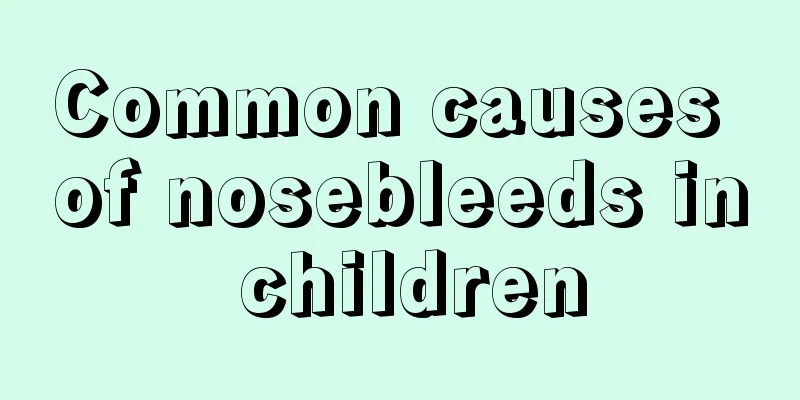The difference between infantile rash and rubella

|
Children’s health is a major concern for parents, but children are always bound to suffer from illnesses of one kind or another, such as colds, fevers, coughs, rashes, etc. These are common health problems for children. Mothers don’t need to worry when encountering such a situation. Just take appropriate measures to treat your child. Below we will give you a detailed introduction to the differences between roseola infantum and rubella. 1. Rubella Rubella is characterized by mild systemic symptoms, with only low or moderate fever, swollen lymph nodes behind the ears, neck and back of the head, and bean-sized lymph nodes that can be felt. The rash is not as dense as measles and is often accompanied by itching. There are no oral mucosal spots in the early stage, and no traces are left after the rash disappears. Many children with rubella often have no symptoms and eat and play as usual. 2. Roseola infantum Its characteristic is "rash appears after the fever subsides", that is, roseola appears after the fever has subsided for several days, and the systemic symptoms are mild. However, it should be noted that a few children, especially younger infants, may have a body temperature as high as 39 to 40 degrees Celsius, during which time convulsions may occur and care should be strengthened. However, the patient remains conscious, and his spirit and appetite remain good after the convulsion. This is the difference between roseola infantum and other pediatric febrile diseases. Complications of roseola infantum are rare and the prognosis is good. 3. Measles It is the disease with the most serious symptoms among the three rashes. The initial symptoms are fever, with body temperature often above 39 degrees, accompanied by upper respiratory tract symptoms such as cough and runny nose. The appearance of needle-shaped white "measles mucosal spots" on the oral mucosa is the most reliable feature for the early diagnosis of measles. Subsequently, scattered small, light pink maculopapules appeared all over the body, gradually increasing in number and turning bright red, and then merging into dark red. After the rash subsides, the skin will remain pigmented and have bran-like desquamation. Children with measles may develop complications such as pneumonia, laryngitis, and encephalitis, so early diagnosis and proper treatment are crucial to the prognosis of measles. The above introduces the differences between roseola infantum and rubella in great detail. I hope it can serve as a reference for mothers. When a young child develops a rash, mothers should determine whether it is roseola or rubella based on the child's other physical conditions. If necessary, it is recommended to take the child to a local regular hospital for examination and treatment. |
<<: Why do newborns yawn and not sleep?
>>: What is the reason why newborns yawn frequently?
Recommend
Why is my baby so irritable?
In life, we often see parents get angry and cry l...
What are the physical methods for reducing fever in children?
Fever refers to a body temperature that exceeds t...
What are the causes of liver damage in children?
The liver is a very important digestive gland in ...
5-year-old child with strabismus
Many people have strabismus since childhood, and ...
The correct way to burp a newborn
Many people have experienced burping, whether the...
What causes itchy soles of children’s feet?
For many people, body itching is very common, and...
What causes pneumonia in children? Three reasons to keep in mind
Pediatric pneumonia is a disease that is easy to ...
What to do if your child's face turns black
Parents care for their children meticulously and ...
Why does my three-year-old baby’s teeth turn black?
When a child is just born, there are many periods...
Which eye drops are good for 3-year-old children?
As babies grow older, they often develop some dis...
What may cause urticaria in children?
When children suffer from urticaria, it is actual...
What does baby nodding breathing mean?
Careful parents will find that many newborn babie...
What should I do if my child doesn’t eat well? These methods can help you
Many children do not know how to eat well, which ...
What are the symptoms of calcium deficiency in five-month-old babies?
Babies may have various problems during their gro...
Can babies eat lychees when they have diarrhea?
The baby's health is the biggest concern of p...









